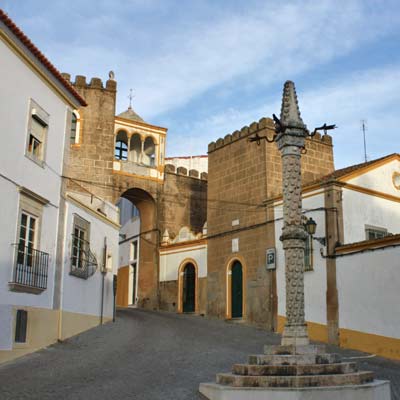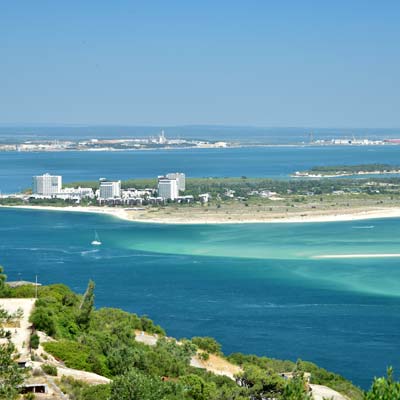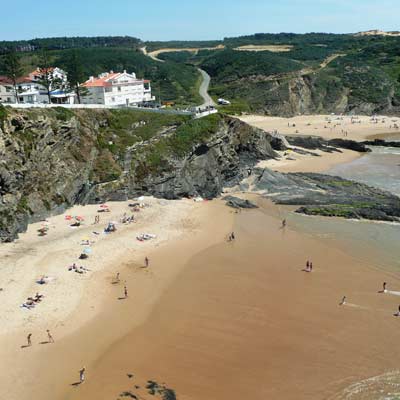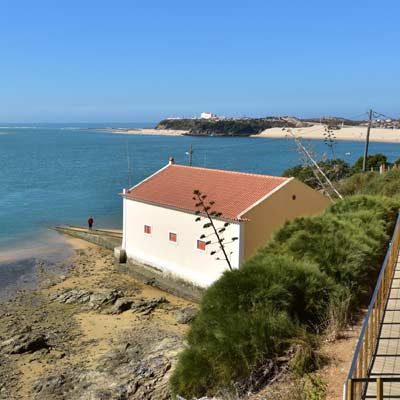MyPortugalHoliday.com
The best independent guide to Portugal
MyPortugalHoliday.com
The best independent guide to Portugal
Where to go in Portugal? - Top 10 Portugal – Portugal's best beach – 1 week suggestions – A weekend in Portugal
The Alentejo, Portugal: an independent travel guide for 2024
The Alentejo is the beautiful rural interior of Portugal, and is characterised by gently rolling hills, historic fortified towns and intense summer heat. This vast region covers over 30% of Portugal, but the rural countryside is sparsely populated, with just less than 5% of the population.
The Alentejo is varied region; on the western coastline are deserted surf beaches and charming fishing towns while along the Spanish border are picturesque walled towns and impregnatable forts. In-between fields filled with cork trees, sleepy villages and empty roads – the Alentejo is the idyllic heartland of Portugal.
The people of the Alentejo have a rich heritage, with a friendly if conservative nature and a distinct style of cooking. The region is known for its slower pace of life, but this is the only way to manage your day when the summertime temperature regularly exceeds 40C.
For your holiday, the Alentejo is where to escape the tourist crowds and discover authentic Portugal. There will be deserted beaches, uncrowded tourist attractions and a way of life that has barely altered in generations.
Highlights of the Alentejo, Portugal
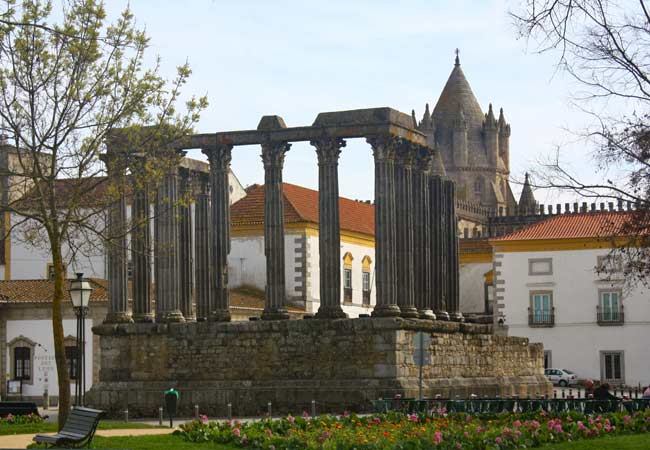
Evora - A historic cathedral city that has little altered in 500 years since its heyday. (Guide to Evora here)
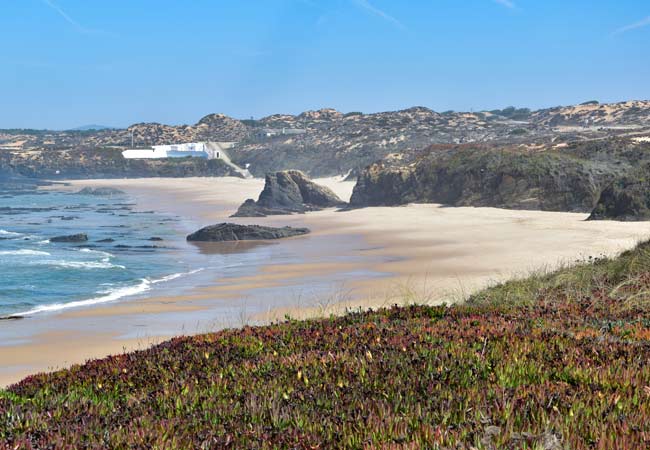
Vila Nova de Milfontes - A charming resort town set along the dramatic Atlantic Ocean coastline. (Guide to Vila Nova de Milfontes)
Monsaraz – A medieval walled town and one of the prettiest locations in Portugal.

Mertola – A peaceful fortified town that sits on the Guadiana River and exemplifies the relaxed pace of life in the Alentejo.
The Alentejo for tourists
Generally, when tourists visit the Alentejo region they visit one of three areas; the medieval towns on the route to Spain, the villages along the Atlantic coastline, or the pretty towns in the Serra de São Mamede mountains.
Evora and the route to Spain
The historic trading route between Spain and Lisbon passes through a natural depression through the granite hills along the border, and this route has always been heavily fortified. At the heart of the region is the ancient cathedral city of Evora, while at the border is the unique star-shaped defences of Elvas, along with numerous forts such as at Evoramonte.
This region contains large deposits of marble and the towns of Borba, Estremoz and Vila Viçosa are known as the “marble towns” as they used it extensively as a building material. To the south, and also constructed to guard the border, is the picturesque walled town of Monsaraz.
Related articles: Evora - Elvas
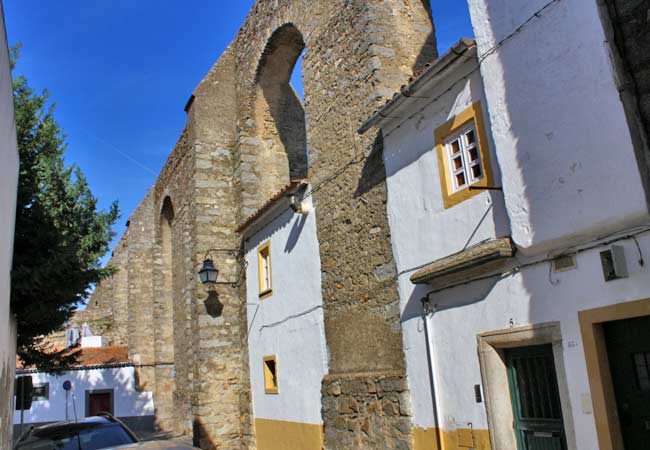
In Evora, houses were constructed under the arches of the aqueduct
Alentejo coastline
The Alentejo coastline is wild and dramatic and contains some of Portugal’s finest beaches. There are vast expanses of sand, towering cliffs, unspoilt countryside and charming villages.
In the summer, these coastal villages are lively with Portuguese tourists, but outside of this short summer season, this stunning coastline is near deserted. The three best villages for a holiday are Vila Nova de Milfontes, Porto Covo and Zambujeira do Mar, and much more characterful and charming than anything found in the touristy Algarve.
At the far northern tip of the Alentejo coastline are the paradise beaches of the Península de Troia and Comporta. This region is a favourite with Europe’s rich, who have constructed secluded villas hidden within the pine forests.
Insight: The city of Sines should be a great tourist destination, as a major historic city close to wonderful beaches. Sadly, the city has a spawling port and oil refinery, and is best avoided.
Related articles: Vila Nova de Milfontes - Península de Troia
Serra de São Mamede
To the northeast of the Alentejo is the Serra de São Mamede mountain range, and the delightful walled towns of Marvão and Castelo de Vide. A tour of this region also usually includes Castelo Branco and Monsanto, though technically they are not in the Alentejo region.
Insight: The Serra de São Mamede mountains are beautiful, but if you are purely after scenery, hiking trails and outside activities the Serra da Estrela tend to better.
Related articles: Monsanto - Serra da Estrela
Off the beaten track in the Baixo Alentejo
The final way to explore the Alentejo is to go completely off the beaten track, and see the interior of the Baixo Alentejo. This sparse area includes the pretty riverside town of Mertola, the reservoir lake at Alqueva and the historic agricultural city of Beja.
Advice: As romantic as it sounds “going off the beaten track”, the southern Baixo Alentejo region is very empty. The poor soils and intense summer heat make farming difficult, and the majority of the region is made up from parched scrublands, olive trees and tiny nondescript farming villages.
The interactive map below shows the Alentejo region along with the three suggested tour routes.
Key 1) Evora 2) Evoramonte 3) Estremoz 4) Vila Viçosa 5) Borba 6) Elvas 7) Monsaraz 8) Península de Troia 9) Comporta 10) Sines 11) Porto Covo 12) Vila Nova de Milfontes 13) Praia de Almograve 14) Zambujeira do Mar 15) Aljezur 16) Portalegre 17) Marvão 18) Castelo de Vide 19) Castelo Branco 20) Monsanto 21) Beja 22) Mértola 23) Alqueva
When to visit the Alentejo?
The Alentejo is the hottest and driest region of Portugal.
The best time to explore the region is in the early spring, when the weather is pleasant, there are no tourists and the flowers are in bloom. During the summer the Alentejo is baked by the intense sun and temperatures reach in excess of 40°C, this makes most sightseeing unbearable. Winters are cooler, but there is always the chance of rain.
How to travel around the Alentejo?
To get the most out of the Alentejo region, a car is required. There is generally good public transport between the major towns and to Lisbon, but there are very limited bus services in the surrounding countryside.
The main intercity bus company of Portugal is Rede Expressos, and their website can be seen here: www.
Food of the Alentejo
The Alentejo region has always been a major pork-producing region, with the pigs able to graze freely on the acorns that fell from the cork trees. A highlight is a “Porco Preto”, a pork steak from the traditional free-roaming Iberian Black Pig.
A unique dish is Migas à Alentejana, a meal based on wheat bread, which is pan-fried in a garlic olive oil sauce and served with chunks of pork. Also worth trying is Carne de Porco à Alentejana (Pork meat from the Alentejo) a delicious mix of pork, clams and diced fried potatoes.
The Alentejo is a major wine producer, which typically produces red wines. If you wish to visit more of the vineyards of the region, see the excellent Vinhos do Alentejo website: www.
The people of the Alentejo region
The people of the Alentejo region are conservative, hardworking and very different from the more populous regions of Portugal. These cultural differences are reflected in the varied regional dishes, which tend to be heart and filling.
Discover more of central Portugal with our guides
